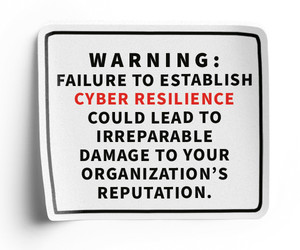Cyber preparedness is no longer an option — it’s a necessity. More IT leaders are allocating resources toward defensive measures, and 60% of businesses are increasingly concerned about phishing, malware, ransomware and other cyberthreats, according to a 2024 U.S Chamber of Commerce survey. Small businesses are particularly susceptible to attacks, as they often lack access to a robust security staff.
There are several ways to bolster your cyber resilience, but threat modeling stands out as an essential one. Here’s what IT leaders need to know:
What Is Threat Modeling?
Threat Modeling is a proactive approach to identifying and mitigating potential security threats. It uses hypothetical scenarios to test and evaluate an organization’s cyberdefenses.
It’s a lot like a fire drill, but it’s a disaster recovery drill. Just as drills prepare people for emergencies, threat modeling prepares businesses for cyberthreats by asking teams to devise fast response plans and defensive strategies. It’s also a way to simulate real-time stress levels and intensity so that employees know what to expect during an attack.
Click the banner below to read the 2024 CDW Cybersecurity Research Report.
The Core Components of Threat Modeling
Small businesses first must identify and prioritize the critical assets that need the most protection. This includes all devices on the network, important data and the personnel who interact with these systems.
After mapping out the system architecture, the next step is to identify potential attack vectors. IT leaders should ask: What are the possible entry points for a breach? What type of attacks could target these areas? The answers can help teams understand where their defenses are lacking.
The third step is to create hypothetical scenarios simulating various cyberattacks, from ransomware and spear phishing to insider threats. These scenarios are used to test the system’s defenses and the organization’s response plan. IT leaders must ensure that all teams responsible for disaster recovery are familiar with each attack and how it works.
At this point, IT leaders can develop a detailed response plan or playbook that outlines the specific defensive steps involved in a given cyberattack. This documentation should also include who is responsible for which actions, how to contain the breach, and how to recover affected systems and data.
Threat modeling is not a one-time activity; it is a regular exercise. IT leaders should run these drills routinely to get familiar and note any areas that need improvement.
Click the banner to discover the benefits of cyber resilience and learn how to get there.
The Benefits of Threat Modeling
Threat modeling gives small businesses a sense of preparedness and cyber resilience so they can respond swiftly when an attack occurs. With a plan in place, IT leaders can also minimize downtime and reduce the financial impact of a cyberattack, especially since the cost of conducting threat modeling is far less than that of a breach.
These threat exercises also improve the overall security posture of a small business, and this type of commitment to cyberdefense can boost customers’ trust in an organization.
RELATED: What is a cybersecurity risk assessment?
Elevate Your Cyber Skills with a Tech Partner
Small businesses often lack the resources to develop comprehensive threat modeling plans on their own, but working with a tech partner such as CDW can help. A team of experts can assist small businesses in developing a disaster recovery plan, conduct penetration tests, run tabletop exercises and perform gap assessments. A tech partner can also provide ongoing expertise about how to continually improve an organization’s threat modeling and fold it into a larger, holistic security strategy.














